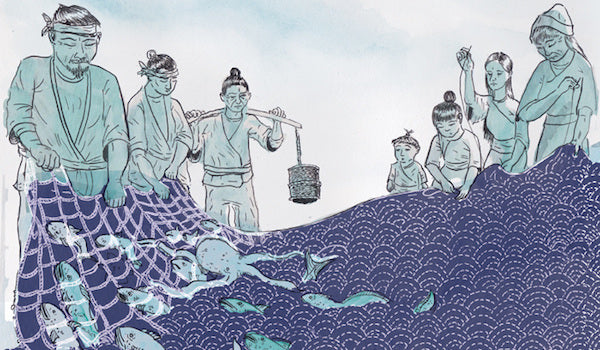
The Sashiko Stitch
Getting in the mood for all things Japanese with the latest issue of Selvedge, our 'Favourite Fabric' contributor, Sarah Jane Downing, traces this origins of the famous Japanese sashiko stitch...

The first written reference to sashiko stitching was in 1788, when it was already well known as a traditional craft and renowned for its beauty. In translation, sashiko means ‘little stab’, an apt description of the careful running stitch used to create the traditional repeated patterns of flowers, clouds, or waves representing the natural world, the simple geometric designs, or family insignia used to traverse the fabric.
Born out of the driving necessity of extreme poverty, sashiko stitching was once the innovation of the Japanese rural poor. During the 18th and 19th centuries life was tough in remote northern areas where fishing and farming produced little more than subsistence level living. The diligent women in these communities were charged with providing clothing for their families, warm enough in the low temperatures of winter, and strong enough to protect them whilst performing their demanding tasks.
Cotton was not cultivated in Japan until the 16th century, remaining expensive and largely unavailable in remote areas until the late 19th century. Instead they largely used hemp and bast fibres to weave homespun cloth, usually dyed with locally produced indigo which was thought to repel insects and snakes. As the garments were worn thin with repeated use, their enterprising makers used sashiko stitching to strengthen them...
You can read this article in full in Selvedge issue 70.
Illustration by Fred Campbell.
